Looking back at the development of the jewelry industry in the past few years, lab-grown diamond is definitely a hot topic that cannot be avoided. More and more jewelry brands around the world have already or are starting to enter lab-grown diamond market.
Well, from the perspective of consumers, why lab-grow diamonds are attractive?
1.High cost-effectiveness
This must be the first and most direct reason.
The Federal Trade Commission (FTC) in the United States revised the Guides for the Jewelry in 2018, expanding the definition of diamond to include both "mined" and "laboratory-grown". That is to say, lab-grown diamond is also a diamond. Lab-grown diamonds have the same appearance and intrinsic physical and chemical properties as natural diamonds, inheriting the noble feeling (bling bling~), but can have lower prices, higher quality, larger carats, and more magnificent styles.
If consumers are provided with the following options:
·The budget for purchasing a 0.3 carat natural diamond allows for the purchase of a 1 carat lab-grown diamond.
or
·A piece of lab-grown diamond jewelry is priced at less than one-third of a natural diamond jewelry of the same quality.
Guess what consumers would choose, lab-grown diamond or natural diamond? The answer is foreseeable.
Joy Thollot, founder of Thollot & Co. Jewelers in the US said, "It's a no-brainer. Customers really are excited that they can get a bigger stone. Fewer and fewer people think in terms of resale, especially the younger engaged couple." In the brand's recent loose-stone unit sales, lab-grown has outnumbered mined two to one, and the average lab-grown center diamond is 2-2.5 carats, a size she says has been “growing by percentage” since the beginning of the year.
The Chinese consumer research data of Kantar also shows that price advantage and the same appearance and quality as natural diamonds are the main reasons for lab-grown diamonds to attract customers.
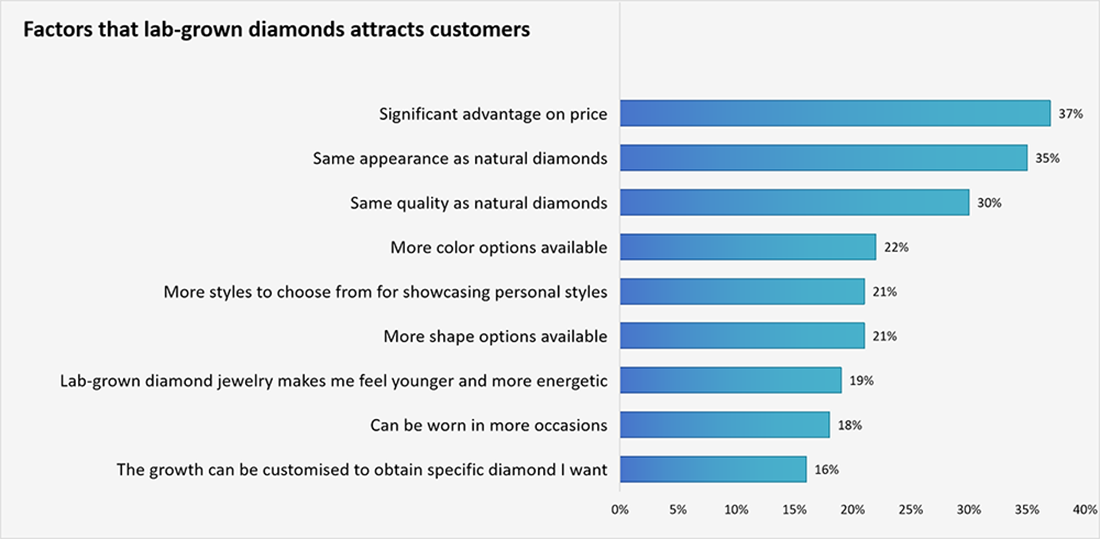

Factors for Lab-grown Diamonds to Attract Consumers
(Image source: "White Paper on Lab-grown Diamond Jewelry Industry", LUSANT & KANTAR)
According to Tenoris research data on specialty jewelers in the United States, from the beginning of 2023 to July 2023, the sales of lab-grown polished diamonds in the US market increased by 55.5%, accounting for 49.9% market share (natural diamonds accounted for 50.1%), and consumer demand for lab-grown diamonds has been on the rise.
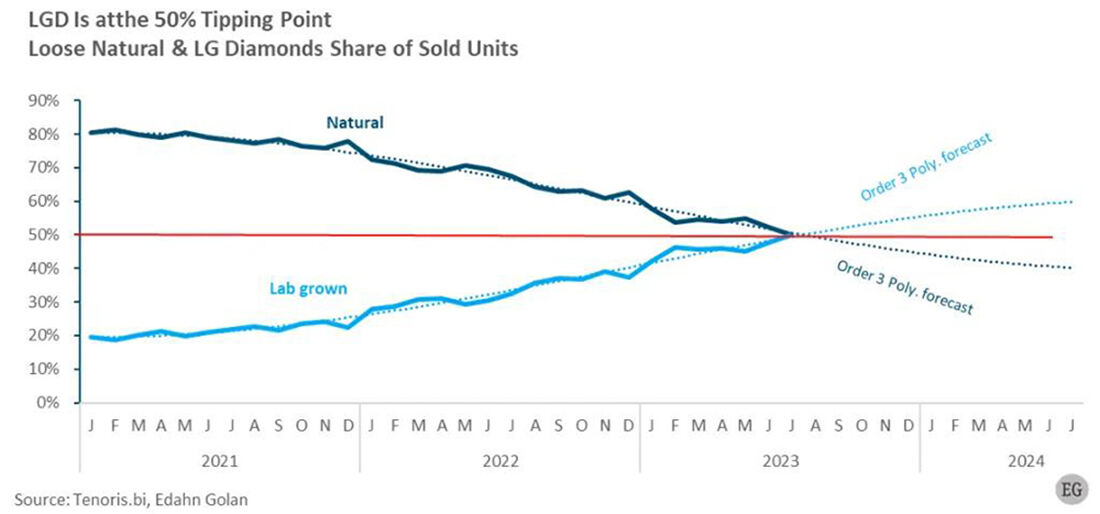
The lab-grown diamonds sales of US specialty jewelers has been on the rise. (source: Tenoris)
2.Diversified and Innovative
In addition to highly cost-effective, more colors, shapes, and styles options are also driving factors for consumer to purchase lab-grown diamonds.
With the continuous advancement of growth technology, lab-grown diamond has unlocked a wider range of colors (pink, yellow, blue, green, etc.), making it easier to obtain pure colors with controllable color intensity, meeting the consumer's demand for high-quality fancy color diamonds.
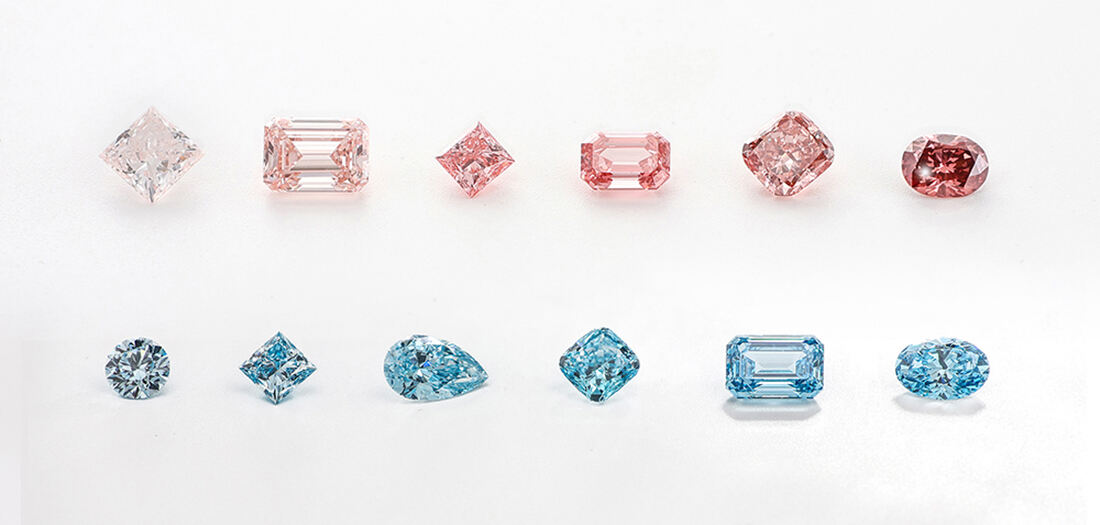
Lab-grown pink and blue diamonds with different color intensity (Image source: Crysdiam)
In addition, natural diamonds require higher yields of cutting, while lab-grown diamonds have fewer restrictions on economic considerations, providing more space for cutting designs and jewelry styles.
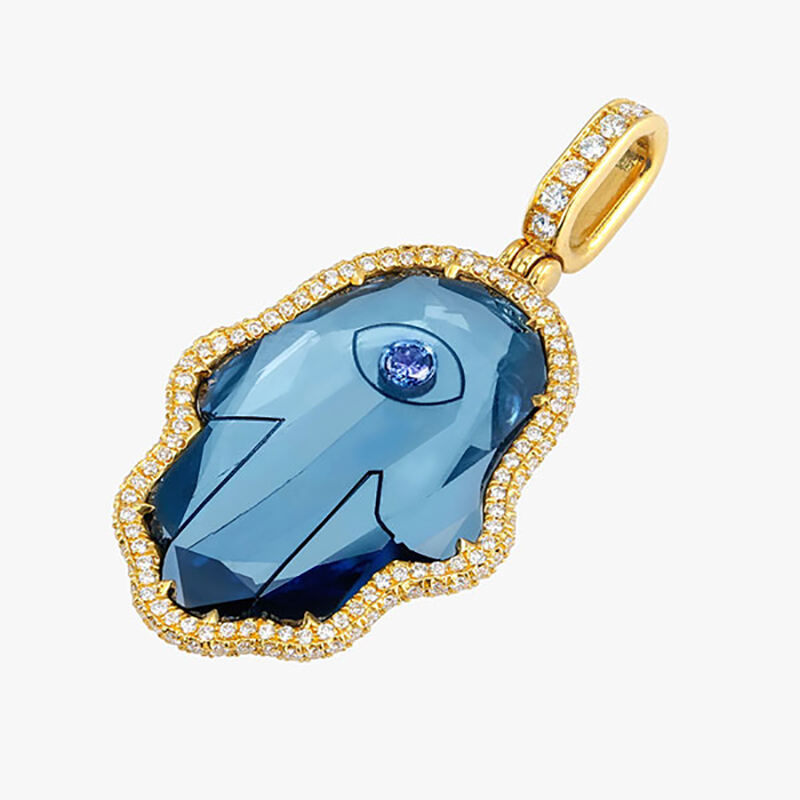
Hamsa lab-grown blue diamond pendant(Image source: Fire Diamonds)
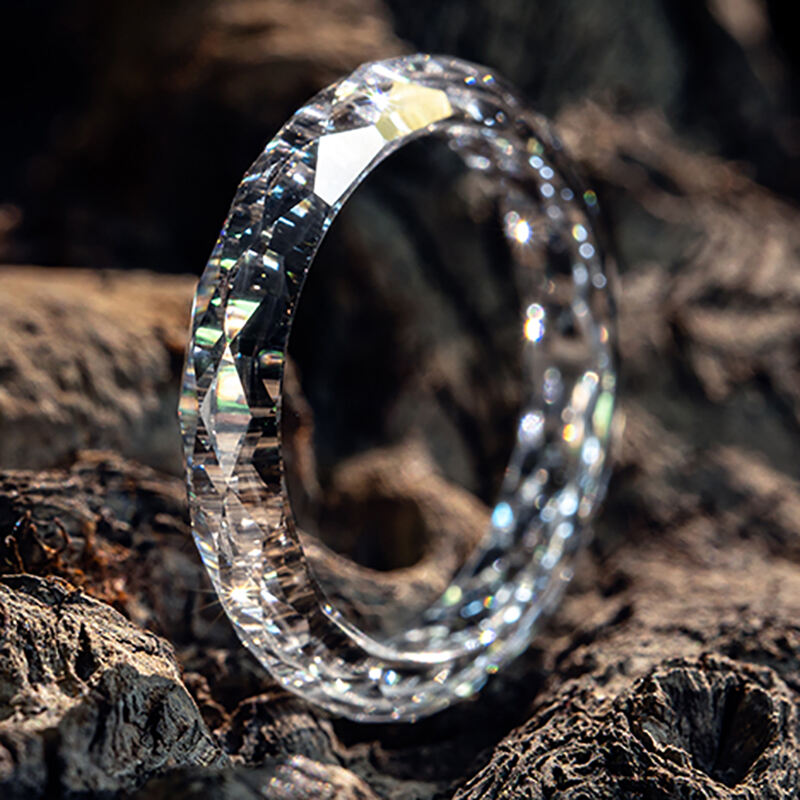
Lab-grown "all diamond" ring(Image source: Dutch Diamond Group)
3.Customizable
Lab-grown diamonds can meet the personalized needs of consumers, such as special carat weights, specific shapes, etc. For example, a 5.20 carat heart-shaped natural diamond may be hard to find, but a 5.20 lab-grown diamond can be customized exclusively.
In addition, there is a special kind of customized lab-grown diamonds - memorial diamonds, which extract carbon elements from hair to make lab-grown diamonds. Whether it’s to celebrate the birth of a newborn baby, a couple getting married, or to memorialize a pet that just like a family member, all these meaningful moments and companionship can be turned into diamonds from hair collection and thus become exclusive commemorations.
4.Sustainable
Sustainable development requires a balance between the environment, society, and economy. Declaring sustainability requires concrete evidence to support it. It is difficult to simply say which is more sustainable, natural diamonds or lab-grown diamonds. However, from an environmental perspective, lab-grown diamonds do not encroach on natural land resources, emits less industrial water and greenhouse gases, and lab-grown diamond production is easier to apply green energy than natural diamond, which help to better reduce the impact on the environment and organisms. Many brands are also turning to the use of lab-grown diamonds from the perspectives of sustainability and responsible consumption.
Understanding the Environmental Impact of Diamond Production Process: Lab-grown Diamonds vs. Natural Diamonds

(Image source: A Comparative Analysis of Energy and Water Consumption of Mined versus Synthetic Diamonds, Energies 2021, 14, 7062)
Do you agree with the above points on lab-grown diamonds?
In the next blog post, we will introduce jewelry brands that have started lab-grown diamond businesses.
 Highlights
Highlights2024-07-24
2024-07-24
2024-07-23
2024-10-23
White and fancy color lab-grown diamonds in various sizes and shapes;
Offered as certified/uncertified stones, matched pairs, and calibrated parcels.